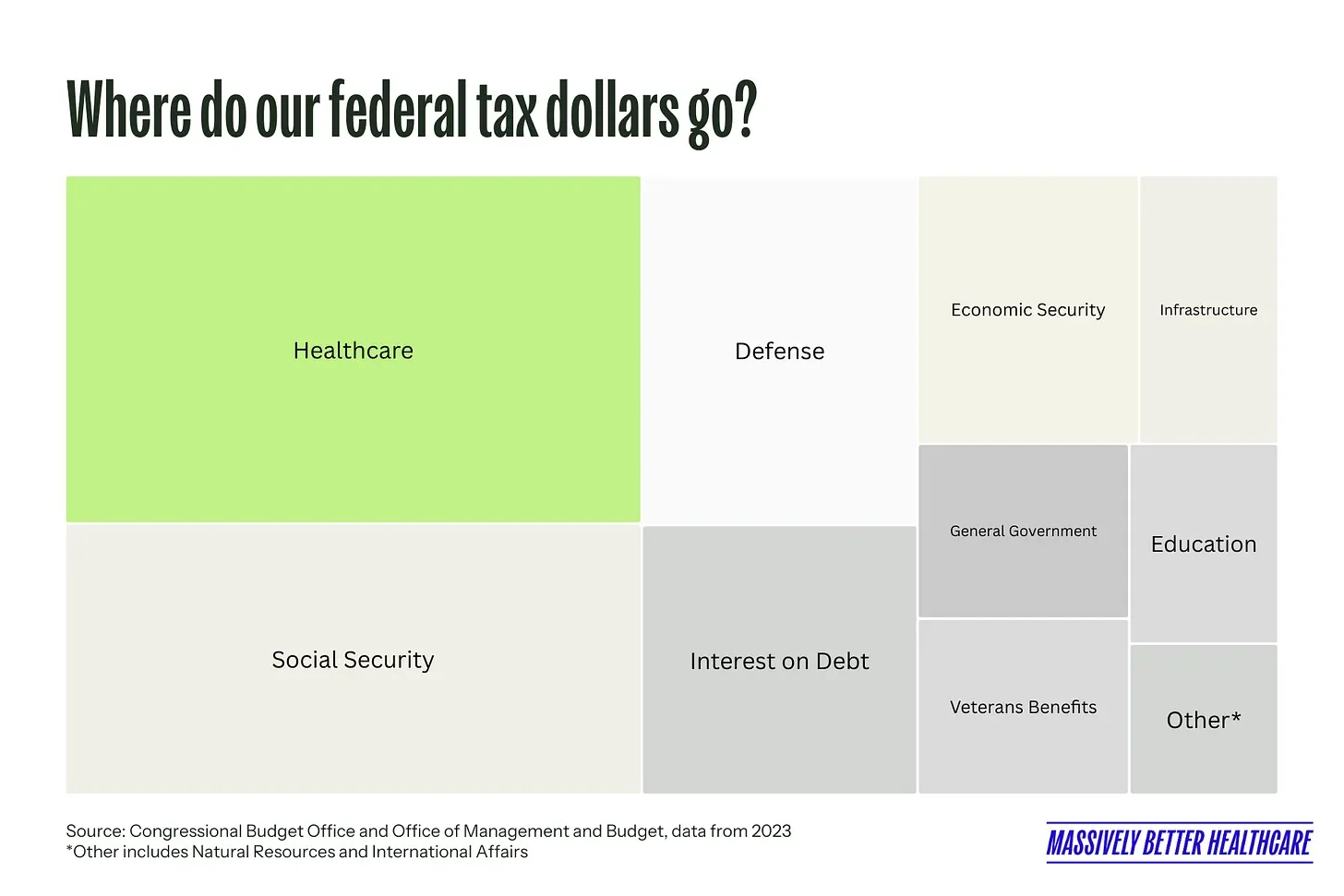Who Really Pays for Healthcare? The Answer Might Surprise You
As you’ve probably noticed, paying for healthcare in America isn’t straightforward. The money flows through insurers, employers, patients, and taxpayers, but the path is anything but clear. The system is set up in a way that makes it nearly impossible to see who’s actually covering the cost—and how much.
So who really pays? Let’s follow the money.
Insurance companies are not really paying
Health insurers are called the “payers” of our healthcare system, but that's not quite accurate. Insurance companies are more like middlemen. They're risk-bearing entities, and they use their market power to get discounts from providers while also trying to keep costs down for their members (and themselves).
Their business model depends on keeping your healthcare expenses— at least in the few years you are on their plan— as low as possible. At the end of the day, they are risk-bearing financial entities, not the ones actually paying for healthcare. In fact, they don't really even "pay" the bills in the traditional sense. They get invoiced by providers and then decide if they should pay the claim.
Employers just shift the cost back to workers
What about employers? After all, more Americans get their health insurance through their job than any other way. But again, it's not quite that simple. The cost of those employer-sponsored health plans gets passed on to workers in the form of lower wages and higher prices for goods and services. In other words, we're still paying for it, just in a less direct way.
Bills, bills, bills
Then there are the costs we see more directly: the co-pays, the deductibles, the bills that show up weeks after a doctor's visit. Americans shell out a lot for healthcare—an average of $1,425 per person in out-of-pocket costs each year, which is more than double what citizens in UK, France, and Japan pay.
These visible expenses are painful, but they’re not the whole story. The biggest share of healthcare spending comes from somewhere else entirely.
Taxes carry a huge share
Perhaps the biggest way we pay for healthcare is… our taxes. We don’t have socialized medicine, yet over a quarter of our federal tax dollars go to healthcare in some form, whether it's Medicare, Medicaid, the Children's Health Insurance Program, or subsidies for Affordable Care Act plans. That's more than we spend on any other single category.
When you add it all up—lower wages, higher prices, out-of-pocket bills, and taxes—it becomes clear that the cost is ultimately borne by Americans themselves. And the burden is far from equal. A Rand study found that lower-income families spend nearly 34% of their income on healthcare, compared to 16% for the wealthiest households.
Which exposes the core problem: the system isn’t just expensive, it’s inequitable.
A system designed for opacity
This tangled cost-sharing doesn’t just confuse people; it makes reform harder. If we can’t clearly see who’s paying and how much, it’s almost impossible to have an honest conversation about fixing the system. And that’s by design—opacity protects entrenched interests and shields them from accountability.
But there’s another way to look at it.
The leverage lies with us
Because we’re the ones ultimately funding the system, we hold the leverage. We can demand transparency, fairness, and better value for every dollar spent. We can push for policies that reward health, not just risk management.
That means expecting more from insurers, employers, and the government. It means refusing to accept a system that hides costs and entrenches inequities.
A massively better healthcare system begins with understanding who pays. But it ends with us—patients, taxpayers, citizens—using our collective power to demand something better. The power to reshape American healthcare isn’t in Washington or in boardrooms. It’s with us.

